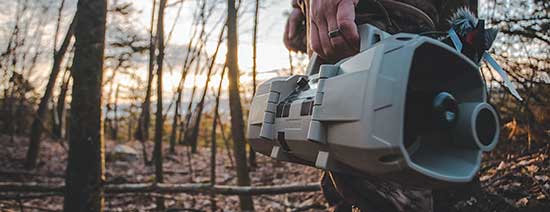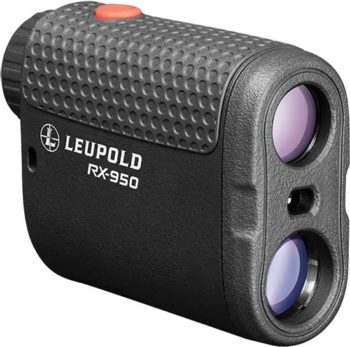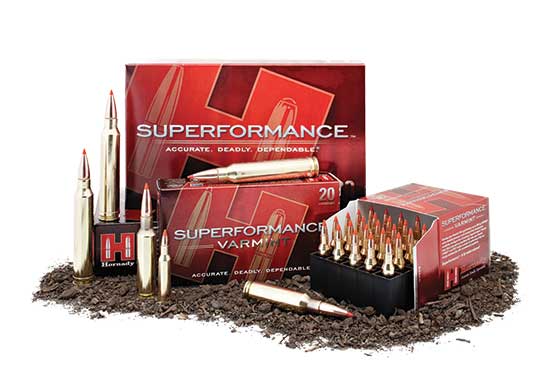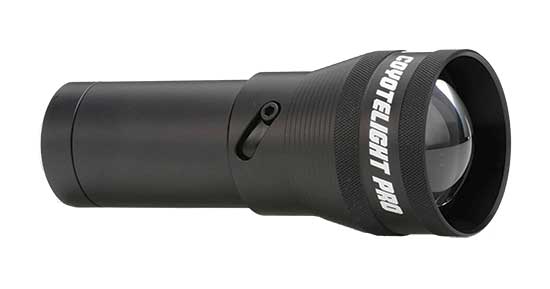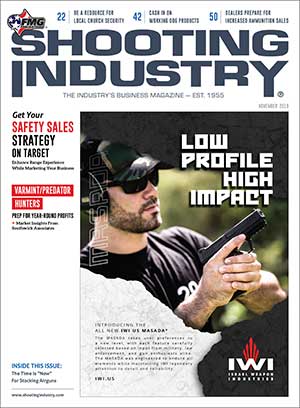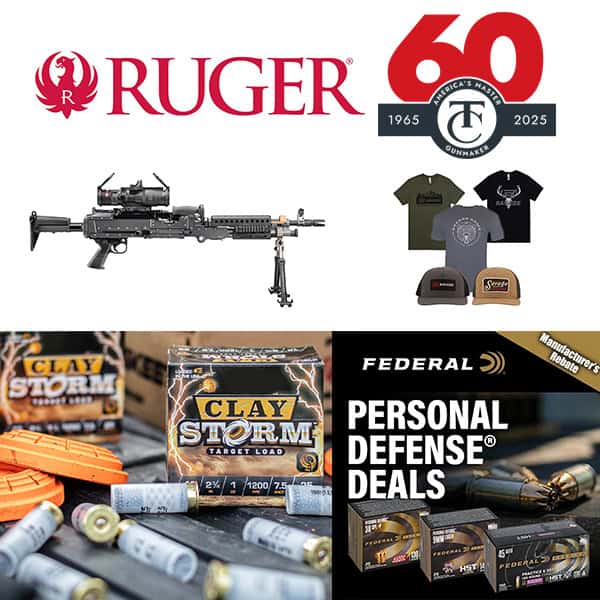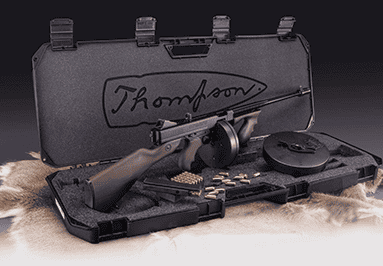Varmint/Predator Hunting Offers Year-Round Sales
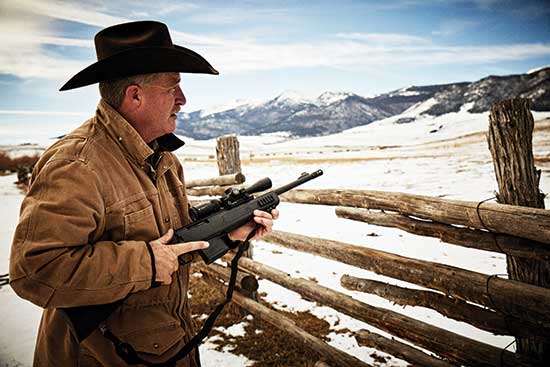
Mossberg’s MVP pairs a bolt-action rifle platform with
AR magazines. Pictured below, the MVP Scout has a combo
package option for customers ― topped by a Vortex 2-7x32mm
riflescope. The .224 Valkyrierepresents a new caliber offering for
2019, available on the MVP LR – Thunder Ranch, Precision Rifle and
Predator Rifle variants. Photo courtesy of Mossberg
When you consider the plight of the white-tailed deer hunter who might go an entire season without taking a shot, it’s easy to see why a novice may find the prospect of deer hunting rather unappealing. Throw in the idea younger generations tend to crave instant gratification, and it could make a person question the future of hunting sports.
Of course, not all hunting has to be about spending your weekends perched in a treestand waiting for a deer that never shows its face. There’s always varmint/predator hunting. It can be done throughout most of the year, and with plentiful opportunities to pull the trigger. Depending on what part of the country you’re in, customers’ potential targets include everything from prairie dogs to coyotes to feral hogs.
“It’s a great way to introduce someone to the shooting sports and hunting,” shared Ron Gissendaner, manager at Sprague’s Sports in Yuma, Ariz., where coyotes are a favorite target for predator hunters.
“ It always runs through families. A lot of kids are getting into it. Those are the ones who will carry it on down the road.”
Mark Rutan, Salesman, Bill Jackson’s Pinellas Park, Fla.
Many of the store’s older customers are active in this arena, but it has a strong appeal for younger customers, too. Coyotes may not offer the same guaranteed action as prairie dogs out west, but these hunters have a much better chance of taking a coyote (or two or three) than they do a deer during a weekend hunt.
“It’s not something where you sit around in the same place all day. And it’s something you can do year round,” Gissendaner said. “The nice thing about coyote hunting: You can see the coyote out there at 800 yards. When you start to call it in, the adrenaline gets going.”
Even if the younger hunters aren’t ready to start with coyotes or hogs, there are smaller game opportunities in most locales.
“Most of the kids I know got started with hunting rabbits and squirrels and stuff like that,” informed Mark Rutan, a salesman at Bill Jackson’s in Pinellas Park, Fla. “It always runs through families. A lot of kids are getting into it. Those are the ones who will carry it on down the road.”
Choosing A Rifle
Several different factors go into the selection of a rifle and caliber for varmint and predator hunting. Among the more popular calibers at Bill Jackson’s are .223, .22 Hornet, .22-250 and even .243.
“Most people want to use a caliber that’s not going to do a lot of damage to the pelt,” Rutan said. “There’s a market for it if you’re doing it professionally. The problem is we don’t have the big fluffy pelts you find up north because of the weather.”
Hog hunters tend to go for various .30 calibers: “You can literally use .30 caliber with hogs,” he confirmed.
When they have a newer hunter in the shop, Rutan and his team will suggest several lower-priced options — including various riflescope combos from Ruger, Savage and Remington — in the $400 range.
“A lot of people are brand loyal. If they have a Leupold scope, they’ll have a Leupold rangefinder.”
Ron Gissendaner, Manager, Sprague’s Sports Yuma, Ariz.
“There are a lot of inexpensive options out there,” Rutan noted.
For the hunters considering longer-range shots — and there aren’t a lot of those in Florida, where thick vegetation is a year-round reality — the options get a bit pricier. Those hunters are more interested in rifles like the Browning X-Bolt, Weatherby Mark V or Remington 700.
“Everyone has their own idea of what works for them and how much they want to spend,” Rutan said. “But generally speaking, the guys who are shooting long distance are spending a lot more money.”
At Sprague’s in Arizona, modern AR-style rifles are popular with varmint hunters, in part because the state doesn’t have magazine capacity limits for that type of hunting. Still, there are those who prefer bolt-action rifles — particularly the longer-range hunters.
“It really just depends on whether you like an automatic transmission or a stick shift,” Gissendaner remarked.
Here, too, hunters opt for smaller calibers to avoid causing too much damage to pelts, particularly when hunting during the time of year when coats are thicker.
Optics Selection Varies
This is an area where location can have a major impact on what varmint hunters are interested in. Arizona, for example, doesn’t allow night hunting. So, Sprague’s doesn’t set aside a lot of inventory space for thermal optics or night-vision scopes.
They do have wide-open spaces (even if most kills happen within 100 yards), offering the opportunity for hunters to consider high-dollar optics. As such, they carry a wide range of options from makers including ZEISS, Vortex, Swarovski and Bushnell, with prices ranging from $80 to several thousand dollars.
“I’ve got guys with the bare minimum they can put on a rifle and I’ve got guys who spend four times as much on the scope as they do their rifle,” Gissendaner noted.
Back in Florida, the situation is essentially reversed. Night hunting is legal, creating opportunities for Bill Jackson’s to carry night vision and thermal optics. But, as noted earlier, long-range shots are rare. They carry a range of manufacturers including Nikon, Swarovski, ZEISS and Leupold.
How much a customer will spend on an optic is often directly related to what they plan to do with it.
“You’re not going to get an inexpensive scope to go night hunting,” Rutan said. “If all you want to do is hunt over short distances during broad daylight, a $200 scope will do everything you need it to do.”
Calls, Camo & More
At the top of the accessories list for predator hunters are the calls they use to lure their prey. These days, the vast majority sold at Sprague’s are electronic. Maybe one out of 20 are the older manual hand calls.
“The nice thing about hand calls is they weigh less and you don’t have to worry about the batteries dying,” Gissendaner noted.
The top sellers, in both electronic and manual, are from FOXPRO and Primos, with the better options selling for $200–$300.
Aside from that critical piece of gear, other popular accessories include monopods, bipods, binoculars, camouflage clothing and rangefinders.
The need for camo may be largely dependent on what the customer is hunting. You probably don’t need it for prairie dogs, but for coyotes and other predators?
“If you’re trying to be a successful varmint hunter, you’ll be wearing some type of camo,” Gissendaner confirmed. “At closer ranges, these dogs are quick to spot anything out of the ordinary and then they’re gone.”
The shop carries a wide range of offerings — the top manufacturer is SITKA Gear — ranging from basic gear up to full ghillie suits.
In Arizona, with its wide-open spaces, rangefinders also are an important tool for hunters who may start calling in a coyote or bobcat at 900 yards. Sprague’s has had mixed success with some of the newer tech, including the SIG SAUER BDX combo kits. Most hunters are happy with a traditional rangefinder option, and the manufacturer of choice was probably decided the day they put a scope on the rifle.
“A lot of people are brand loyal. If they have a Leupold scope, they’ll have a Leupold rangefinder,” Gissendaner said.
Cast A Wide Net
Like a lot of shops, Sprague’s uses a broad array of mediums to reach customers, including radio, Facebook, Instagram, email blasts — even newspaper ads. They prefer not to put too much emphasis on any one of those options.
Each has had success in reaching customers in the past.
“You just never know what’s going to trip it,” Gissendaner added.
Heading into hunting season, they’ll offer sight-in specials and free scope-mounting services. They also do general hunter-safety seminars to reach out to customers who might be thinking about giving it a try.
Every couple of years they’ll offer a seminar on varmint calls, where they bring in company representatives for hands-on demos.
“It always helps,” he said. “Most of us do better when it’s hands-on rather than reading it in a book.”
Speaking of hands-on, year-round varmint/predator sales give hunters lots of opportunities in the field.
Join the conversation! How would you describe your store’s varmint hunting sales? Send the SI team an email: comments@shootingindustry.com.

